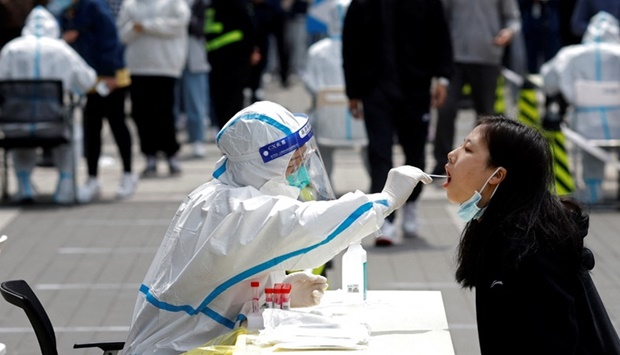China yesterday eased some of its strict Covid rules, including shortening quarantines by two days for close contacts of infected people and for inbound travellers, and removing a penalty for airlines for bringing in too many cases.
The loosening of curbs, a day after President Xi Jinping led his new Politburo Standing Committee in a meeting on Covid, cheered markets even as many experts warned that the measures were incremental and reopening probably remained a long way off.
Under the new rules, centralised quarantine times for close contacts and travellers from abroad were shortened from seven to five days.
The requirement for three further days in home isolation after centralised quarantine remains.
China will also stop trying to identify “secondary” contacts — a major annoyance for residents of cities who are caught up in sweeping contact-tracing efforts when a case is found — while still identifying close contacts.
“Optimising and adjusting prevention and control measures is not relaxing prevention and control, let alone opening up and ‘laying flat’, but to adapt to the new situation of epidemic prevention and control and the new characteristics of Covid-19 mutation,” the National Health Commission (NHC) said.
The easing comes even as case numbers in China surge to their highest since April, with Beijing and the central city of Zhengzhou seeing record tallies, and numerous cities widened localised lockdowns and other measures, including in the southern metropolis of Guangzhou.
But Bruce Pang, chief economist at Jones Lang Lasalle, said some interpretations of the new rules and what they might mean for prospects for a full opening were “too optimistic”.
“The Covid policy will only be fine-tuned in the short term,” he said. The news was greeted with both excitement and wariness among Chinese citizens fed-up with nearly three years of Covid curbs, which are also taking a mounting toll on the world’s second-largest economy.
Travel platform Qunar said search volumes for international flights tripled from the previous day.
“It depends on how the localities execute. I’m afraid to be optimistic,” said one user on the Weibo social media platform.
Still, the measures were China’s most significant specific Covid easing steps to date, and were widely seen as a milestone.
“This set of substantial changes marks the beginning of the end of zero-Covid, in our view,” Citi analysts wrote. “We expect the preparation work for full reopening to accelerate with a quick ramp-up of booster vaccinations in the coming months.”
The NHC said it would develop a plan to accelerate vaccinations, which experts say is crucial before the country can begin more fully dialling-back a zero-Covid policy that has made China a global outlier.
Among the new measures is an adjustment of categorisation of Covid risk areas to “high” and “low” — eliminating a “medium” category in an bid to minimise the number of people caught up in control measures.
The new steps include ending a “circuit breaker”, under which airlines faced a suspension of flights if they brought in too many Covid-infected passengers, a system that caused frequent cancellations.
Still, international flights remain at a small fraction of pre-Covid levels.
“It is a baby step in the right direction,” Joerg Wuttke, president of the European Union Chamber of Commerce in China, said of the new rules.
“But the big question looming over all of us is when is China ready to actually start a vaccination campaign that gives them the herd immunity to really open up the country?”

(File photo)


